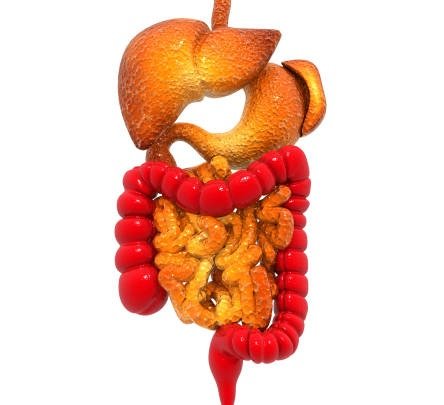
#humananatomy
#humanphysiology
#digestivesystem
human digestive system anatomy In human digestive system education we can learn about the digestive system of the human body. The human digestive system anatomy is a device that measures the passage of food from the feces to the stool.
What we will learn in today's lesson is-
1.What is human digestive system anatomy?
2.Mouth.
3.Lips.
4.Palate.
5.Cheeks
6.Teeth.
7.Pharynx.
8.Oesophagus
9.Salivary glands.
10.Abdominal cavity.
11.Small Intestines.
12.Large Intestines.
13.Conclusion.
We will learn more about the digestive system of the human body. Because it would be very good for us to know these.
1. human digestive system anatomy
The human digestive system anatomy is a method of expelling what we eat with our mouths.
This system is also called Alimentary canal.
The digestive system or Alimentary Canal or human digestive system anatomy is what it is
★ Mouth.
★ Lips.
★ Palate.
★ Cheeks or cheeks.
★ Teeth.
★ Pharynx.
★ Oesophagus esophagus.
★ Salivary glands.
★ Abdominal cavity or abdominal cavity.
★ Small Intestines.
★ Large Intestines.
★ Rectum.
★ Anus
2. Mouth or mouth cavity: -
The first part of the human digestive system anatomy is the mouth.
It is an oval cavity, from which digestion begins.
There are several elements in it. They are teeth, tongue, lips, gums, cheeks, platelets and esophagus.
3. Lips.
The two muscular folds in the pores of the mouth are the two lips. They have skin on the outside and mucous membrane on the inside. Which is called the Orbicilarise Oris muscle.
Moreover, there are a few more muscles by which the two limbs move up and down.
4. Palate
The upper part of the mouth can be divided into two parts.
Hard plate
Soft plate.
The hard plate is made up of two palatine processes on either side of the maxilla bone. He has two more palatine bones in the back.
Soft Palate It is more behind the hard plate. It is made up of Fibrous Tissue inside and Mucous Membrane above it.
5. Cheeks:-
The cheeks form the two sides of the mouth. Inside it is a mucous membrane with a few small papillaces.
This is called Buccinator muscle.
6.Teeth:-
The teeth are of the yoghurt type.
Temporary Teeth,
Permanent Teeth.
In infancy or between the ages of 1 and 3 years, a total of 20 teeth grow, 10 on each side. These teeth are temporary teeth.
These teeth fall out when a child is 6 to 8 years old. These teeth go up and new teeth grow again.
When these new teeth grow, there are 16 teeth in each of the two teeth and a total of 32 teeth are called permanent teeth. These teeth do not get up and stay in the mouth for life.
However, some people lose their teeth between the ages of 60 and 70.
7.Pharynx:-
In the human body, the esophagus is located just behind the nose, mouth and larynx.
It descends from Skull's batch to the 6th cervical vertebra. At the lower level it is connected to the esophagus.
8.Oesophagus:-
It is a muscular duct, 9 to 10 inches long. The esophagus pierces the larynx above and the diaphragm below and reaches the stomach.
Then the cardiac part of the stomach opens it. The first part of it is in the trachea. It is located in front of the spine.
9. Salivary Glands:-
The salivary glands are the compound racemose glands, which contain small sac-like alveoli. Which makes small lobules. All these alveoli come out of the small duct.
They again form large ducts together. With it, saliva comes out and mixes with the mouth food.
10. Abdominal Cavity:-
The abdominal cavity is the large cavity or cavity of the human body. It is oval in shape.
Above it is the diaphragm, below is the pelvis and in the middle is the floor.
This cavity can be divided into two parts. E.g.
Upper abdominal cavity,
The cavity of the lower pelvis.
11. Small Intestines:-
The small intestine is a longitudinal organ, first U-shaped in the abdomen and beginning in the duodenum. Then go down and eat a little twist and stay across a lot of parts.
12. Large Intestines:-
The colon begins with a valve where the small intestine ends.
It has some parts. The parts are-cicam, appendix, ascending colon.
Sikam is on the right in the Iliak region.
The appendix has four coats like the esophagus. Moreover, they contain a large amount of lymphoid tissue.
Its position from the bottom of the ascending colon to the top of the liver.
13. Conclusion: -
Finally, it can be said that the human digestive system anatomy of the human body is a special operation. Food enters the mouth and is digested by various chemicals.
Food extracts mixed with blood give us energy. And the rest or unnecessary substances are excreted in the form of feces.
photos source
| Photo collect | pixabay.com |
|---|---|
| Edit | picArt app |
| Editor | Md Nayeb Ali |
You may read other steemit posts
https://steemit.com/hive-184794/@doctorstrips/human-venous-system-anatomy
https://steemit.com/hive-184794/@doctorstrips/composition-of-blood-anatomy
https://steemit.com/hive-152587/@doctorstrips/human-lymphatic-system-anatomy
Your ever
I like best community
@steemhealthcare
@SteemSchools
@HEALTH REPUBLIC
@Bangladesh-বাংলাদেশ
@Dance and music
@Steem Bangladesh
@Account Booster 👍
@SCT.암호화폐.Crypto
@Amaze Creater Union
@SteemitCryptoAcademy